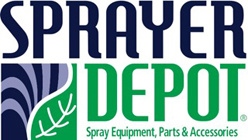
Most Golf Course Maintenance Operations start at 5 a.m. I compare prepping the golf course for play each day to a race. The pace of the race depends on what type of course you are... public, resort or private. Generally the pace is much slower and detail orientated in a private golf club setting. In Florida, the growing season is 365 days a year so many clubs mow the greens every day. Mowing heights on greens can range anywhere from .09" to .150". You can skip a day or two during cold weather, but most operations opt to roll greens in place of mowing. Generally Tees, Fairways, Approaches and Collars are mowed 2-3 days a week, depending on growth and time of year. Heights on these areas are in the .250" to .650 range.
Private clubs will generally walk-mow greens, tees and collars and lower budget courses will use riding mowers. Rough is generally mowed once per week over several days. Heights in rough can be anywhere from 1.25" with Bermuda grass to 3-4" with Bluegrass and Rye. The highest maintenance area on any course is those holes in the ground filled with sand called Bunkers. Bunkers are raked every day to every other day on most courses. Lastly, but arguably the most important is the service man or woman. This person sets up the course daily for play. This includes moving tee markers, filling divots, moving traffic controls and cutting a new hole on the green every day.
The job of the Superintendent and Assistant Superintendent is much like a conductor of an Orchestra. We make sure people are where they are supposed to be and doing their assigned task. When everything is moving correctly, it is a beautiful thing to watch! We have done our job when we have properly prepared the course without getting caught by the early sunrise golfer. Other daily jobs of the Superintendent, Assistant, Spray Tech or Irrigation Tech include a weekly foliar fertilizer application to greens. Some high end courses will also spray tee tops at the same frequency. Fairways are generally sprayed every 3-4 weeks with a foliar fertilizer or plant growth regulator to slow growth and reduce mow applications. Weeds are spot sprayed, every surface of the course is roamed over in search of plant disease. Irrigation is run to water hot spots and the system is constantly looked over for irrigation failure. Long range applications include 3-4 wall to wall pre-emerge applications for weed control, 1-2 applications per year for insect control (in Florida the dreaded Mole Cricket) and several bulk wall to wall granular fertilizer applications to keep the grass green & growing.
Aerification. Every golfer I've ever met hates to hear about Aerification. I always hear, " Why are you aerating the greens, they are perfect!" But, it is an absolute necessity if you wish to maintain healthy turf grass. Golf Courses usually aerate greens 2-3 times year in the growing season. As grass grows it produces thatch, with is made up dead and decaying grass. Over time this will build up and produce an organic layer not conducive to plant growth. The objective is to remove as much of this layer as possible. In the golf course industry that annual displacement number is 25%. If you can remove 25% of your playing surface through cultivation per year, than you have a good chance to stay ahead of the curve. Unfortunately, this displacement is rarely met and greens will accumulate organic matter, worsen every year and turf grass quality will decline with age.

.png?width=280&name=SameDayShippingGuarantee-New%20(1).png)



